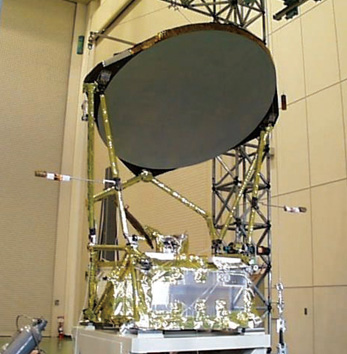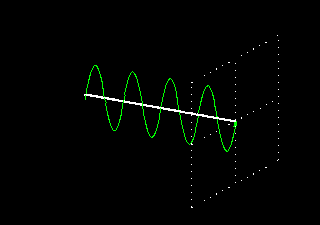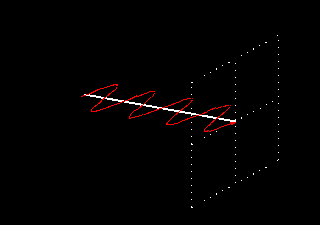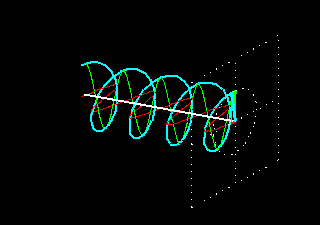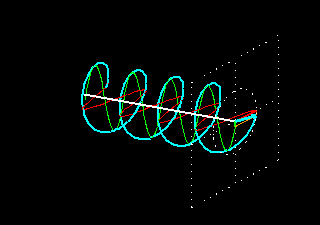MiRS Sensors
AMSR-E (Advanced Microwave Scanning Radiometer-EOS) Overview
Satellite(s)
The Aqua satellite is still operating, but AMSR-E failed on 4 October 2011.
MiRS Production Status
Research / experimental.
The Advanced Microwave Scanning Radiometer for EOS (AMSR-E) is a modified version of AMSR that flew on ADEOS-II. NASDA provides the instrument for flight on board NASA's Earth Observing System (EOS) Aqua platform. AMSR-E is indispensable for Aqua's mission, which is dedicated to the observation of climate and hydrology.
AMSR-E is a multifrequency, dual-polarized microwave radiometer that detects faint microwave emissions from the Earth's surface and atmosphere. Various geophysical parameters can be retrieved, including water vapor, cloud liquid water, precipitation, sea surface temperature, sea surface wind speed, sea ice concentration, snow water equivalent, and soil moisture. Global and continuous observation is performed with fine spatial resolution by using one of the largest ever microwave radiometer antenna. The long-term geophysical record will play an important role in climate change monitoring and will provide valuable information for understanding the Earth's climate system, including water and energy circulation. Near real-time products will be used to investigate satellite data assimilation into weather forecasting models and to contribute to improved forecasting accuracy.
AMSR aboard ADEOS-II (AMSR-E aboard Aqua) will be placed in a morning (afternoon) orbit. Frequent sampling realized by this combination enables us to observe rapidly changing phenomena as well as to obtain information on the diurnal variation of geophysical parameters.
AMSR-E aboard Aqua is a joint project with NASA as well as an international activity in which scientists and engineers worldwide collaborate in algorithm development and data validation.
AMSR-E is a modified version of AMSR that flew aboard ADEOS-II and is intended to fly on the EOS Aqua platform. Major modifications include scaling down the antenna size (from 2.0m to 1.6m) due to the limitation of the fairing size, employing a deployable antenna system, and removing the 50GHz channels. Since Aqua's orbit altitude of approximately 700km is lower than that of ADEOS-II, the spatial resolution remains nearly unaffected by this down sizing of the antenna. Information on the oxygen absorption line complex in the 50- to 60-GHz band is provided by the Advanced Microwave Sounding Unit (AMSU), one of the Aqua satellite mission instrument.
| Center Frequency (GHz) | 6.925 | 10.65 | 18.7 | 23.8 | 36.5 | 89.0 A |
89.0 B |
|---|---|---|---|---|---|---|---|
| Band Width (MHz) | 350 | 100 | 200 | 400 | 1000 | 3000 | |
| Polarization | Vertical and Horizontal | ||||||
| 3dB Beam Width (°) | 2.2 | 1.5 | 0.8 | 0.92 | 0.42 | 0.19 | 0.18 |
| IFOV (km) | 43×75 | 29×51 | 16×27 | 18×32 | 8.2×14.4 | 3.7×6.5 | 3.5×5.9 |
| Sampling Interval (km) | 9×10 | 4.5×4 | 4.5×6 | ||||
| Temperature Sensitivity (K) | 0.34 | 0.7 | 0.7 | 0.6 | 0.7 | 1.2 | 1.2 |
| Incidence Angle (°) | 55.0 | 54.5 | |||||
| Dynamic Range (K) | 2.7 - 340 | ||||||
| Swath Width (km) | Approximately 1450 | ||||||
| Integration Time (msec) | 2.5 | 1.2 | |||||
| Quantization (bit) | 12 | 10 | |||||
| Scan Cycle (sec) | 1.5 | ||||||
Notes:
Source: NASA AQUA Project
Photo courtesy of JAXA.

